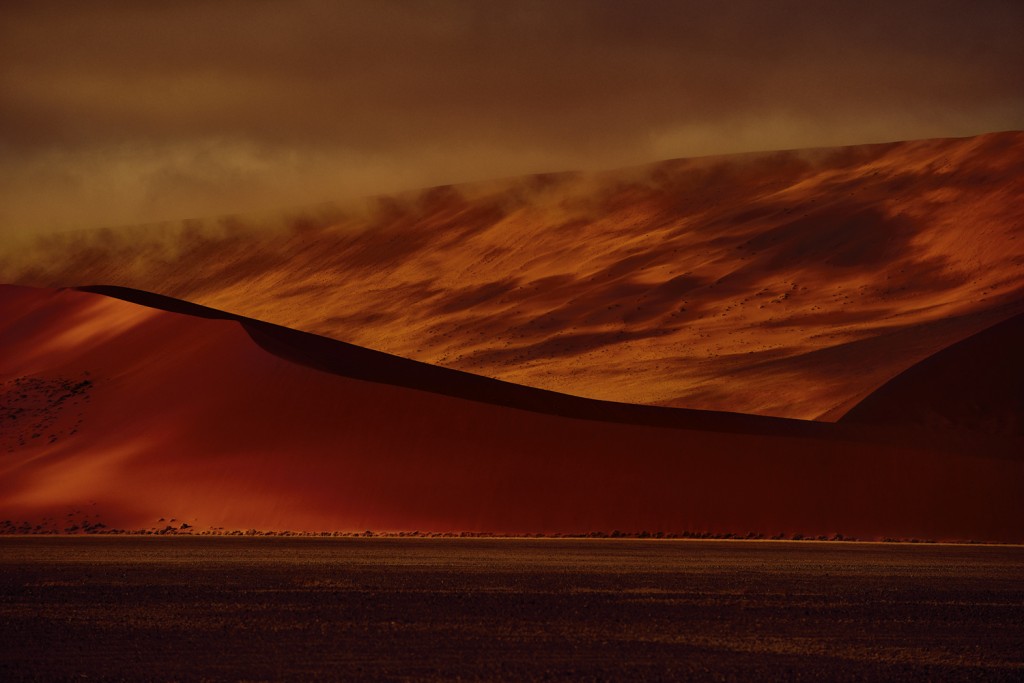
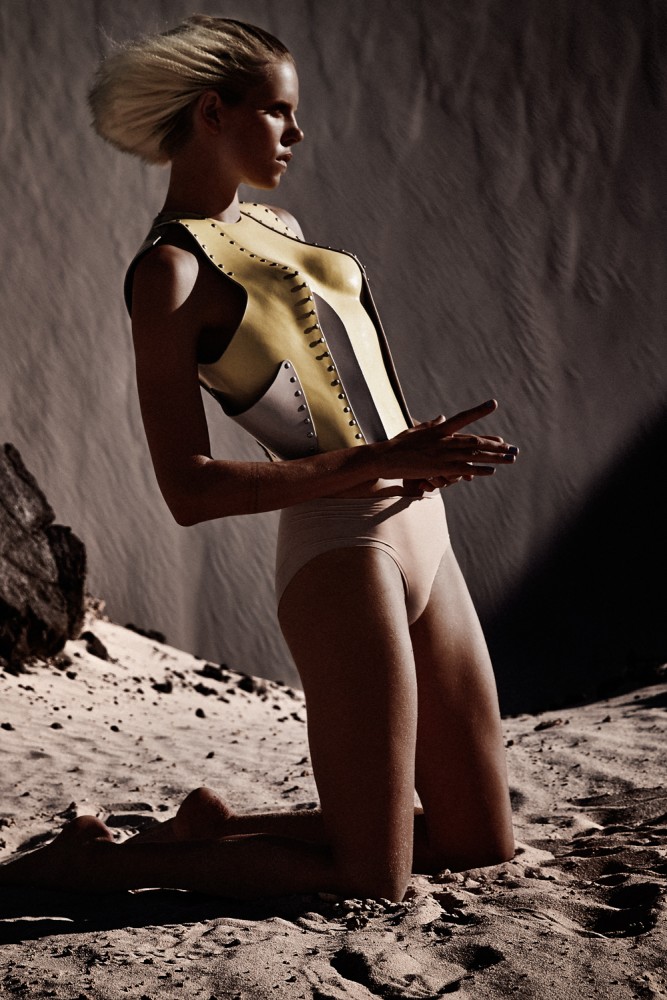
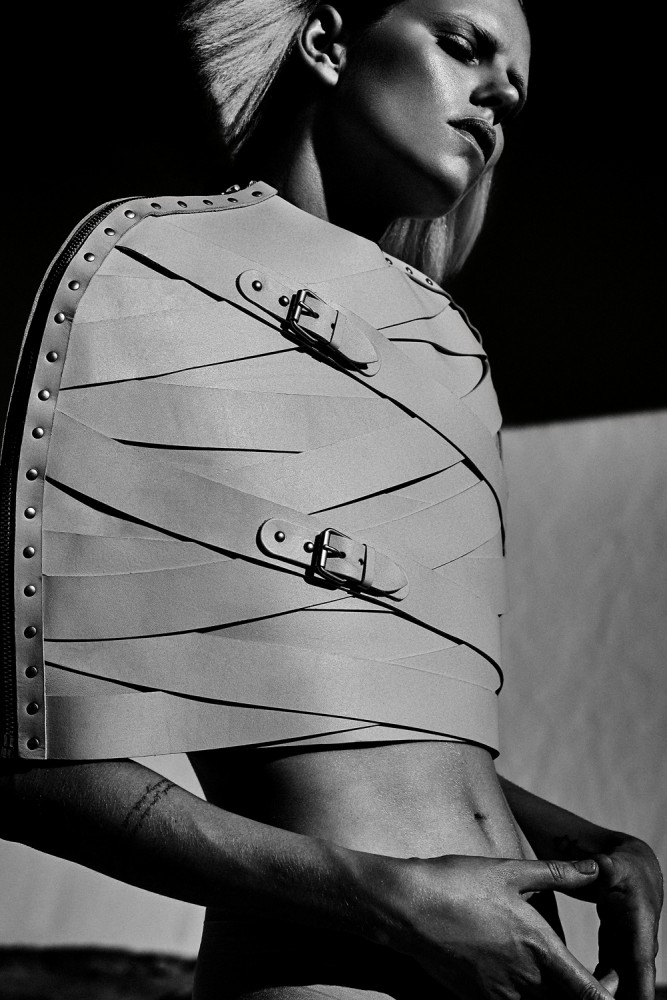
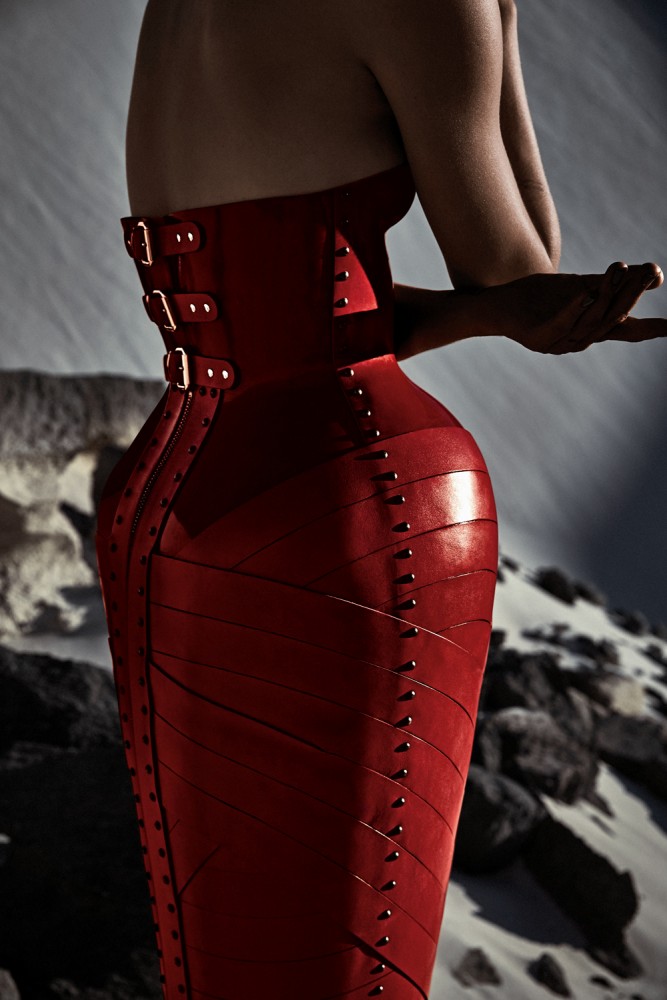
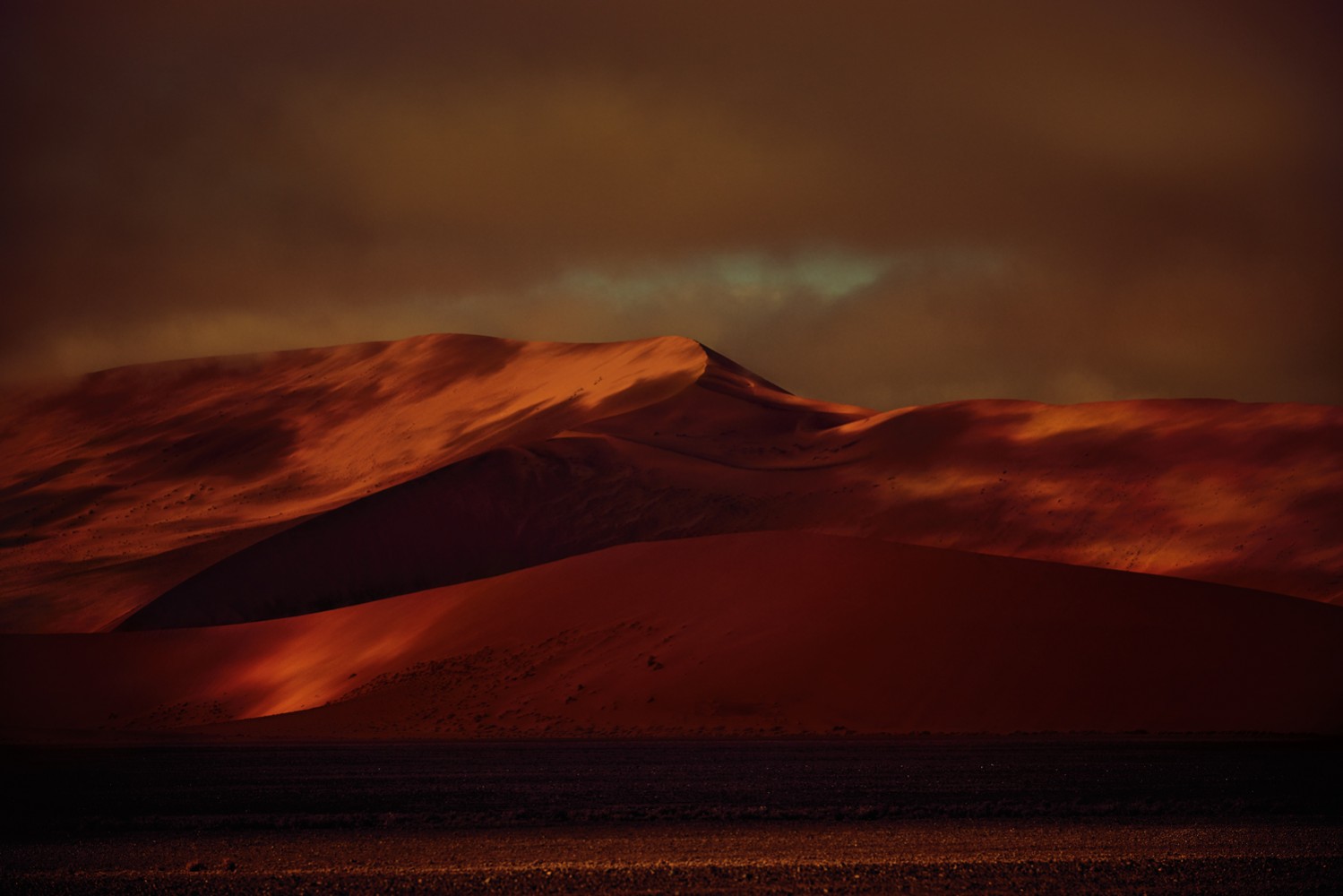
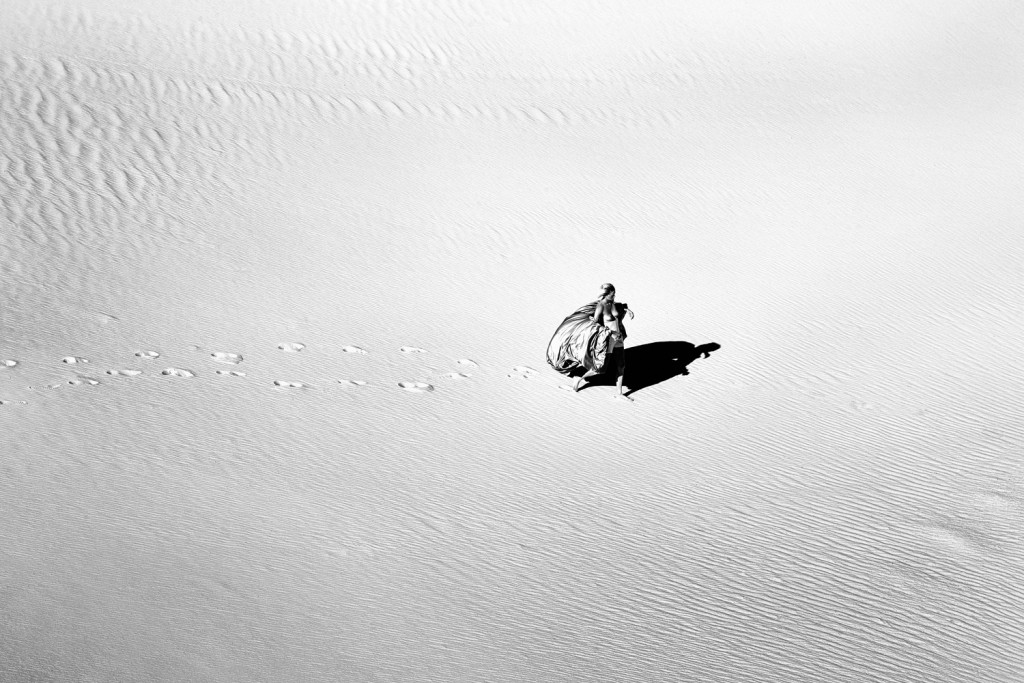
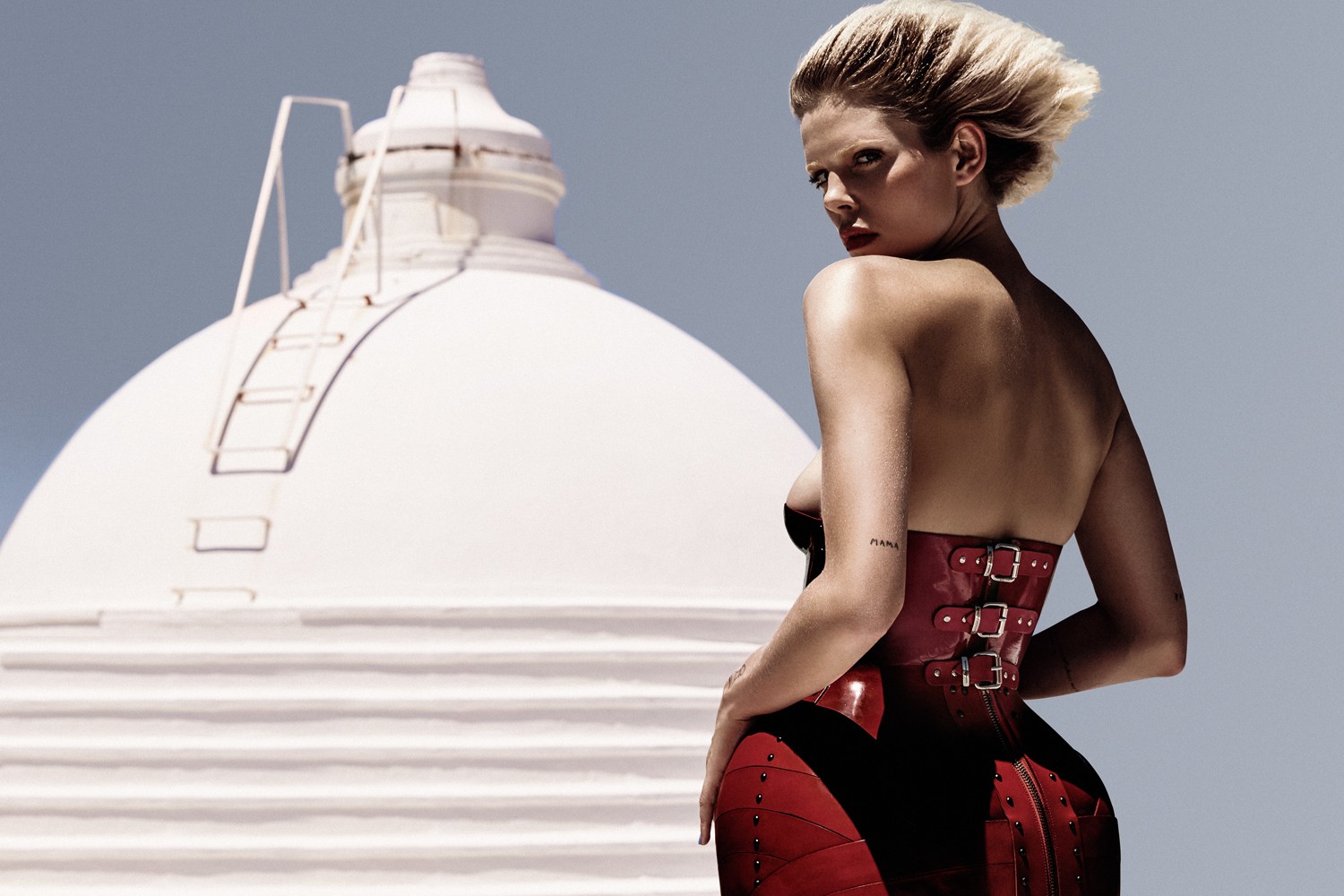
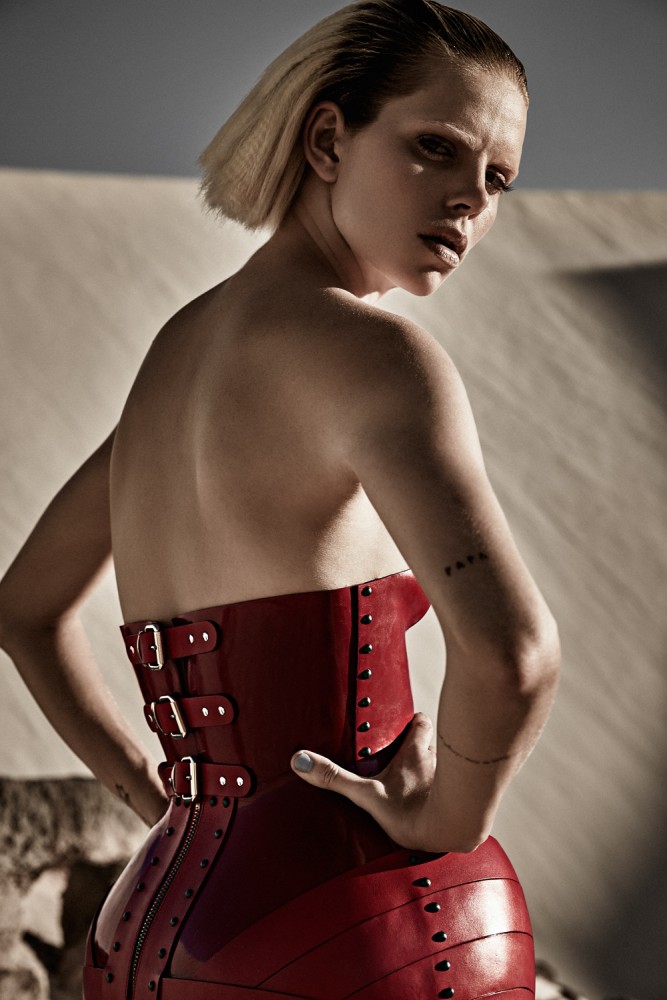
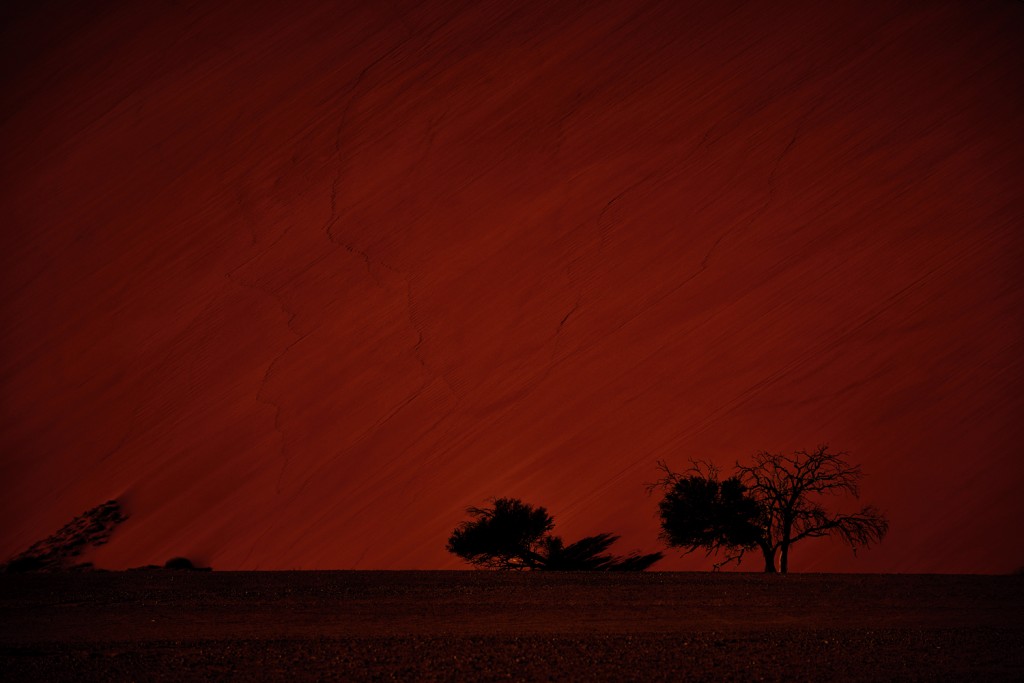
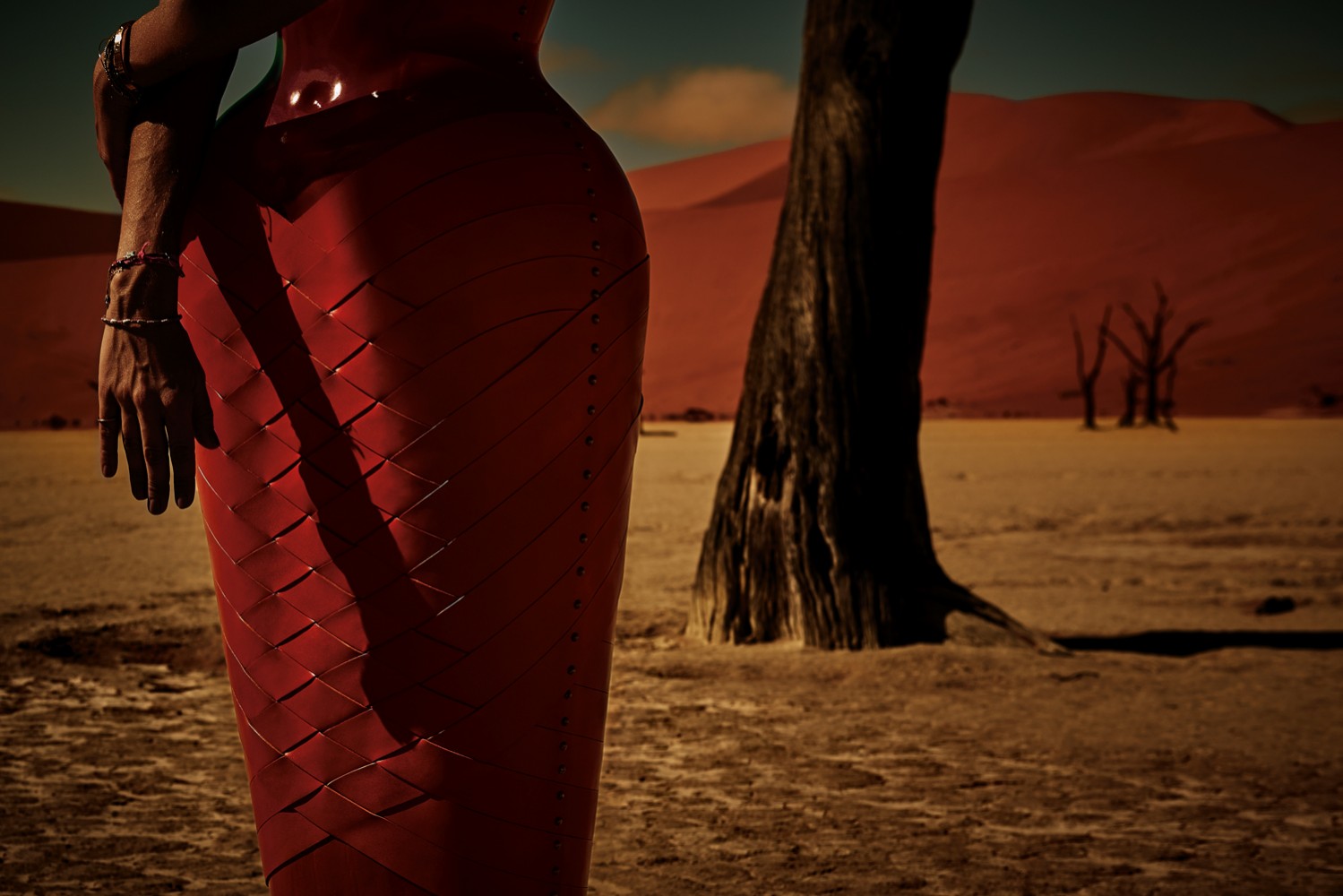
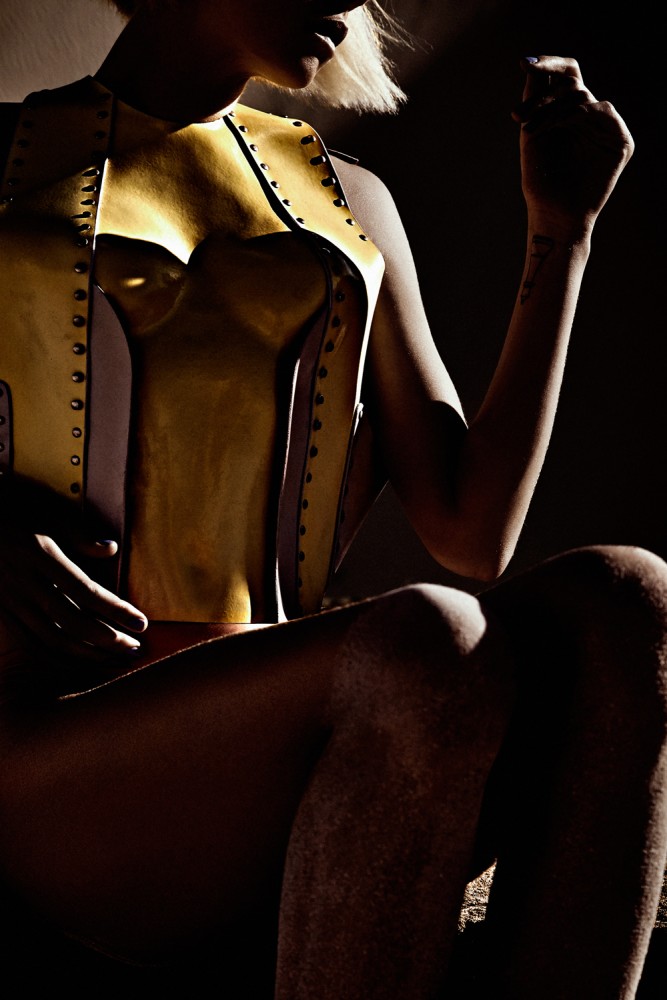
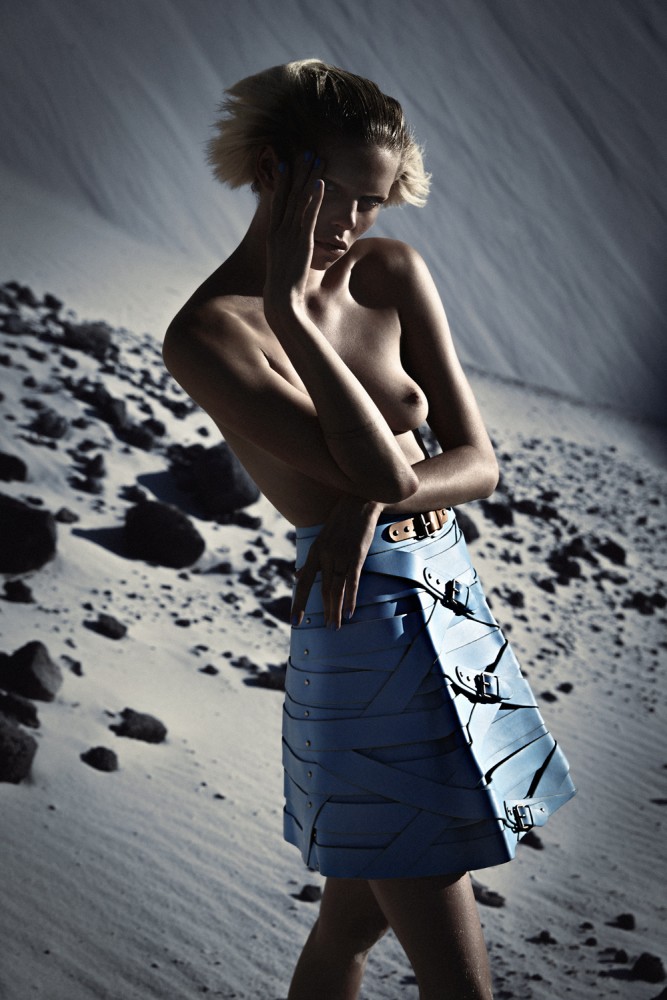
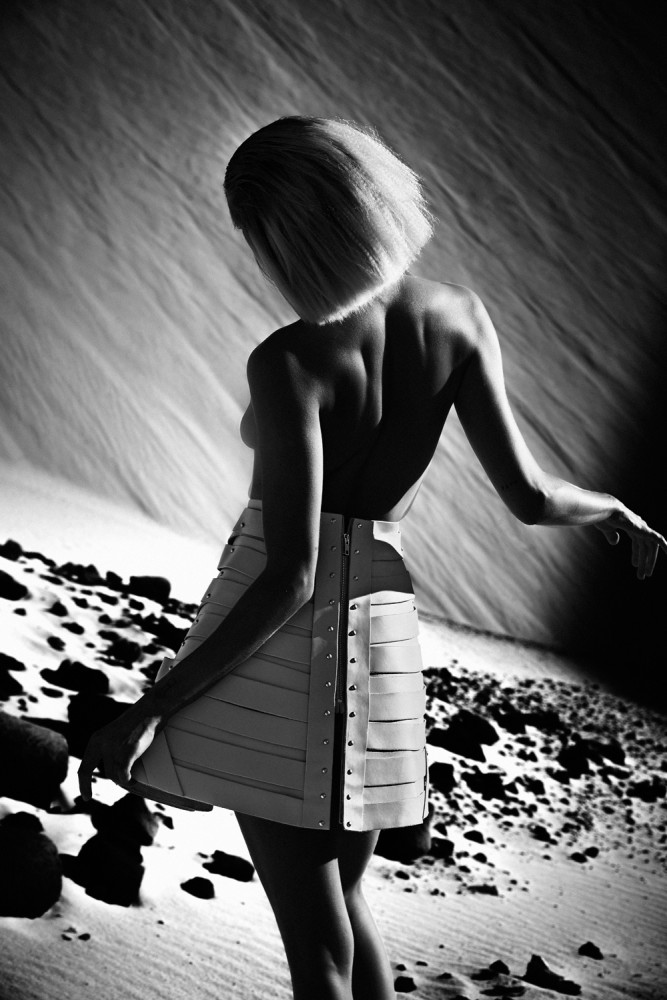
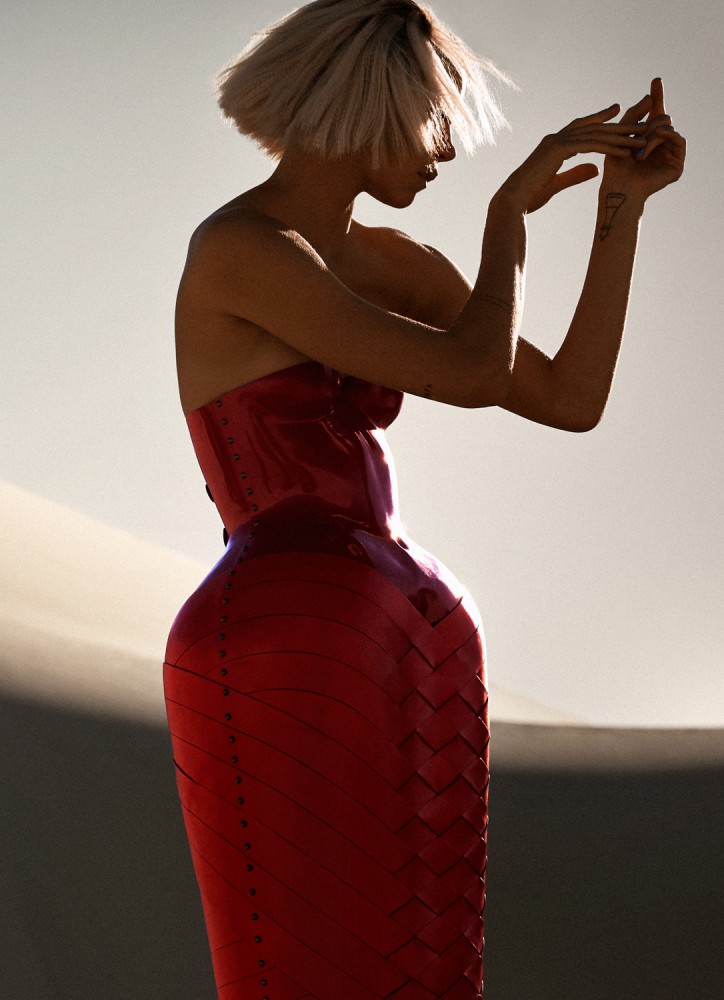
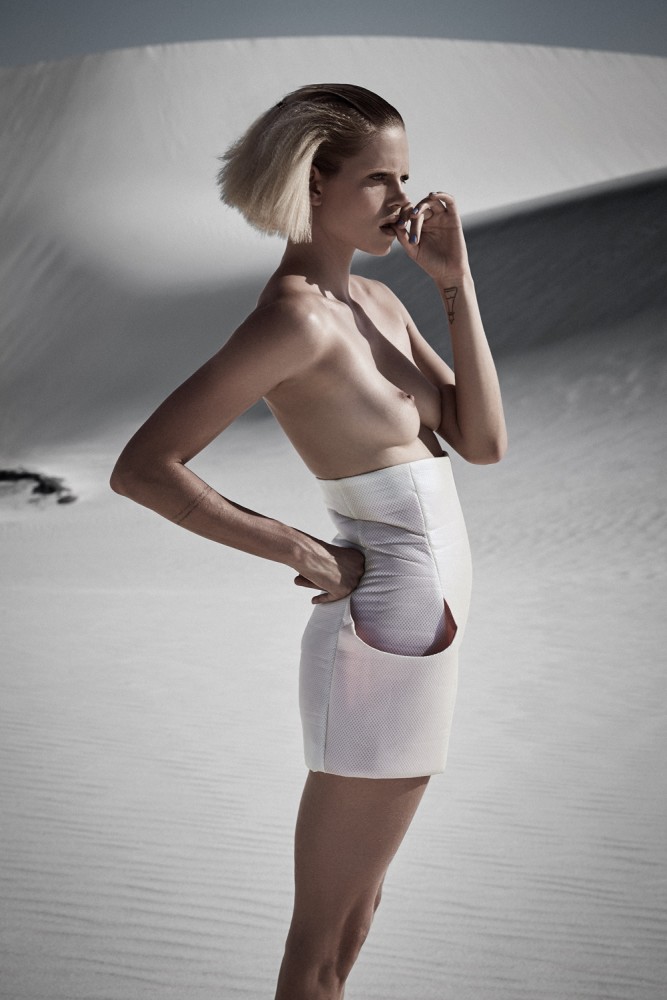
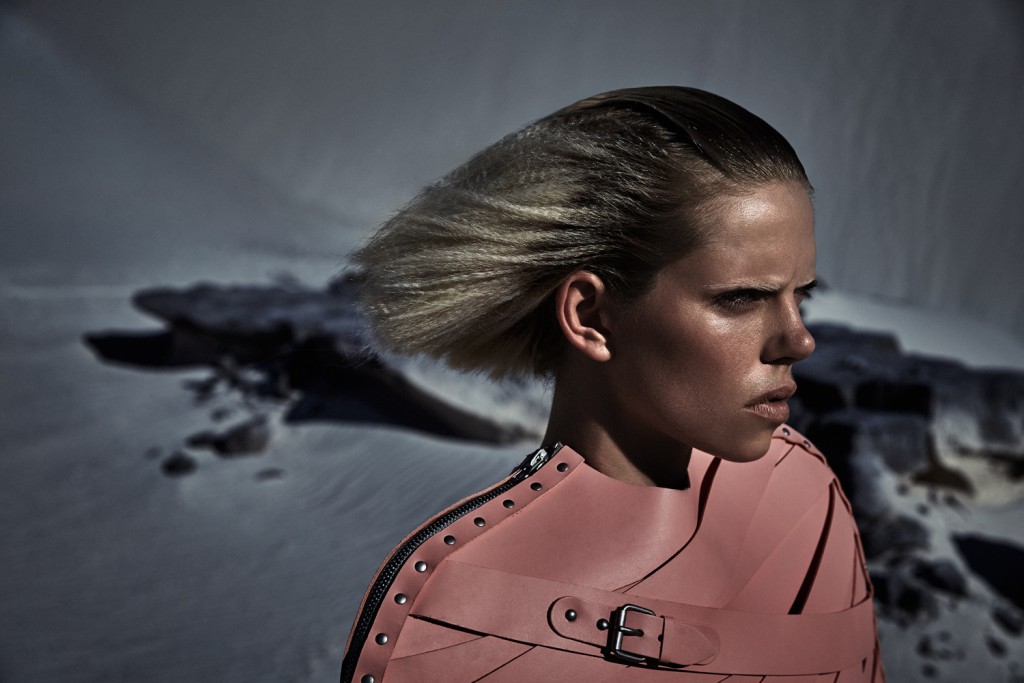


















INTERVIEW
Michael Groeger
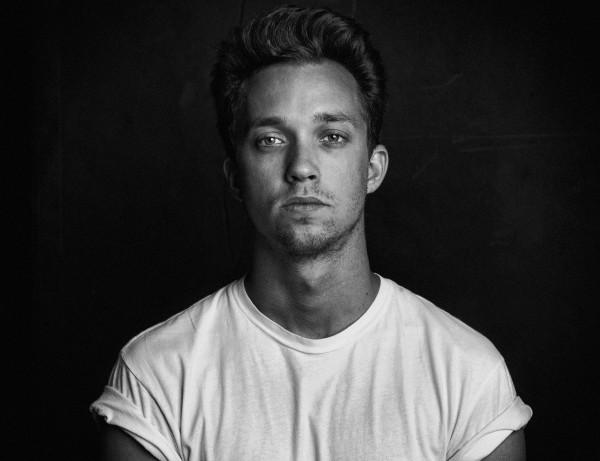
PHOTOGRAPHY Michael Groeger STYLING Løuw Køtzé PRODUCTION & POST PRODUCTION ZERO-8 Productions HAIR & MAKEUP Richard Wilkinson FASHION DESIGN Marina Hoermanseder MODEL Nina Milner @ Women CAMERA LEICA M (Typ 240) with Summilux-M 35mm f/1.4 ASPH.
For Michael Groeger, the spectacular, reddish dunes and cliff landscapes of Namibia offered the perfect setting for designs by Marina Hoermanseder to have the most impact. In ‘Planet Mars’, tight corsages with buckle features present a deliberate, restricting contrast to the endless freedom of nature.
You completed studies at the School of Visual Arts in New York and then assisted the renown photographer Steven Klein. To what degree did this help you achieve success as a fashion photographer relatively early on? Or were other factors involved?
Without a doubt this was one of the reasons, because, within a short period of time, I was able to build up a lot of knowledge, which I would otherwise not have had access to. However, it’s not always a case of just one factor; rather my path is composed of various building blocks.
Your photographic signature is pretty impressive, and your protagonists are strong characters. How would you yourself describe your style?
It’s an interplay of body language, power, individuality and character, where the beauty of the model also plays an important role for me.
You travelled to Namibia to photograph 'Planet Mars’. Why Namibia?
We wanted something special, a location that hadn’t seen many productions. Namibia’s multi-faceted aspects of nature and endless desert make it a truly impressive place. The play of colours in nature and the sand formations that have been created over decades, offered the perfect foundation for our project.
Was it a challenge to carry out the project in the desert?
Absolutely. There’s virtually no support on-site, so we had to bring everything we needed with us. Just transporting the clothes and the equipment in a small airplane was incredibly involved. Consequently, the crew had to miss out on certain food items, because the plane’s storage space was used for other things.
Designer Marina Hoermanseder was responsible for the looks. What was the connection between that and the exceptional landscapes you chose?
The unique looks are dominated by corsages that are closed with buckles. I sees this as similar to constricted societies in some third world countries, where people are in part unable to experience freedom.
A preview of the pictures was held in Zürich. How did that go over?
Fantastically. The controversy of the looks combined with the unique setting proved very appealing.
Which camera did you use for the series? What stood out for you about it?
I photographed with the Leica M. Of course, because of the manual focus, this was a challenge; however, you can achieve outstanding results with the M.
Alternately, you often photograph with the Leica S. Why did you change this time?
In this case, the most important aspect was to have a more compact solution. Because of the many impressions, it was important to always have the camera on hand quickly, and this was definitely better with the smaller M.
Will you remain faithful to your style or are there changes ahead?
I believe that everyone continues evolving, but, as a photographer, it’s important to remain faithful to your fundamental style, while also moving with the times; both in relation to the technology and to society.